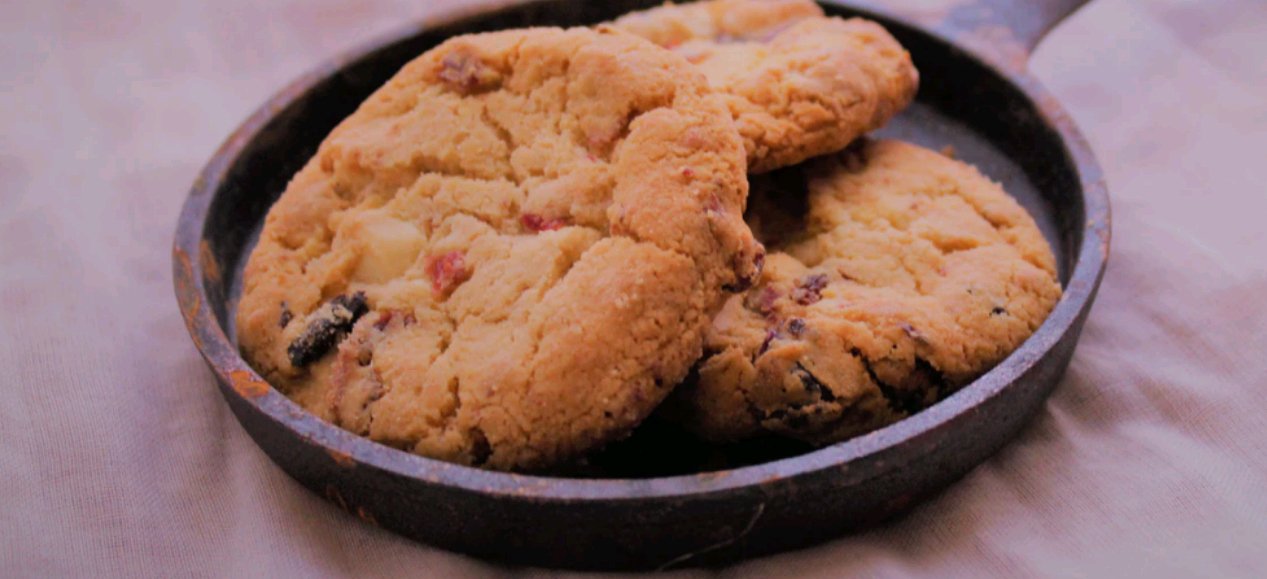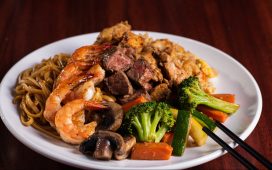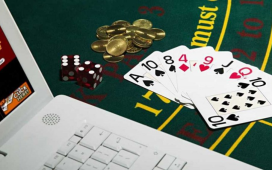Table Of Contents
Ever heard people say that they cook but don’t bake? Although baking is essentially just another way of cooking food, it is not as simple as other methods.
In fact, baking is often considered a science with a language of its own. If you don’t have any idea what the variances of creaming, folding, and beating are or what makes dough different from batter, you probably need to brush up on your knowledge of terminologies used in baking.
Whether you’re training to bake on your own or planning on taking baking classes, this glossary of common baking terms can help make learning the craft easier.
Baking Nouns: What Those “Things” Are Called
Many words you’ll encounter in baking refer to specific tools, ingredients, techniques, and processes, including:
1. Batter
This is a mixture of eggs, flour, dairy, and other ingredients with fluid consistency that can be poured.
2. Bain-marie
More commonly referred to as a “hot water bath,” this piece of equipment is used to melt butter and chocolate or keep ingredients warm by placing them atop a pot of simmering water.
3. Buttercream
Made by creaming butter with powdered sugar plus food colorings and flavorings, this is often used to top, coat, decorate, or fill cakes and cupcakes.
4. Crumb
This describes the small particles in bread and cake.
5. Crust
This refers to the outer skin of a pie or bread, which usually comes with a hard texture.
6. Dough
This is a thick baking mixture made with flour and a liquid ingredient to form a substance solid enough to be rolled and kneaded.
7. Dry ingredients
This refers to all the ingredients in a recipe that don’t contain water and usually come in solid form. Certain recipes require dry ingredients to be mixed first before being combined with other mixtures. Examples of dry ingredients are:
- Flour
- Sugar
- Cocoa powder
- Salt
8. Egg wash
As a noun, egg wash refers to beaten eggs. In some cases, water and milk can be added.
9. Frosting
This describes the sweet glaze used to decorate or cover pastries, cakes, and cookies.
10. Soft peaks
This refers to cream or egg whites whipped to the point where the peak slumps or bends over to one side. You can create soft peaks by pulling the whisk or the beater straight up after whipping out of the foam.
11. Stiff peaks
Similar to soft peaks, except the cream or egg whites are beaten until the peaks stand completely erect.
12. Turntable
The turntable is not just an ordinary cake stand, it has a rotating base and is used for decorating cakes.
13. Whisk
This refers to a kitchen tool with wire loops attached to a handle and is used to add air to a mixture as ingredients are combined.
14. Yield
Also called “batch,” this refers to the number of baked goods produced from one recipe.
15. Zest
Used to add flavor to food, this can be made by scraping the outer skin layer of citrus fruits with the use of a grater.
Verbs in Baking: Action Words Used in Baking Recipes
Here, you’ll find action words that describe how the different steps and techniques in baking are performed.
16. Aerate
This refers to the act of incorporating air into something (as in a batter).
17. Beat
Beating means rapidly stirring ingredients together to aerate them using a whisk, spoon, food processor, or electric mixer.
18. Blend
Blending entails mixing ingredients together until well combined.
19. Caramelize
This is the word used for heating sugary substances until they start to turn brown.
20. Cream
This method, which entails beating butter and sugar (and the occasional egg) together to achieve a light and creamy substance, helps make batter airy and aids in the leavening process.
21. Dust
Dusting is an act of coating the surface via a light sprinkling of any dry powdery substance, such as sugar, flour, or cocoa.
22. Drizzle
This refers to the act of pouring liquid in a thin stream on top of something.
23. Egg wash
Egg washing entails brushing a beaten egg mixture over the food surface, usually to add color after baking.
24. Fold
Folding describes combining two substances while ensuring a delicate, lofty texture without deflating, usually with the use of a spatula. To fold, place the spatula on the bottom of the bowl and glide it up over the top, turning the bowl in a 90-degree angle.
25. Glaze
Glazing refers to the act of coating with a thick, sugar-based sauce.
26. Grease
Greasing is the act of coating the inner parts of a pan or baking dish with a fatty substance such as butter, lard, or oil to prevent sticking.
27. Knead
This is the process of combining dough by hand atop a hard surface using folding, pressing down, and 90-degree turn movements. This movement also helps develop gluten strands that give bread and baked goods strength.
28. Proof
This refers to the process of letting yeast activate to help the dough rise.
29. Score
Scoring means slitting or cutting lines onto something.
30. Sponge
This is a two-step method for making bread, which starts with the yeast pre-ferment (also called the “sponge”) or yeast starter. When fermentation occurs, the sponge is then added to the final dough.
31. Temper
This is the method of gradually raising a substance’s temperature, usually used in chocolate and eggs. When tempering eggs, a hot liquid is added gently in small amounts to prevent scrambling.
32. Whip
This is the act of beating liquid ingredients together (e.g., egg whites and heavy cream) using a whisk or mixer to incorporate air and produce volume. The end result is usually light and frothy.
Adjectives in Baking: Words that Describe Accurately
Baking recipes, like most recipes, also have several describing words in them. Below are words that describe specific and accurate degrees of something:
33. Lukewarm
This describes the temperature of a substance that is slightly warm or about 105 degrees Fahrenheit.
34. Scald
This refers to temperatures close to the boiling point.
35. Softened
This is the state in which a previously solid substance with high-fat content is brought to room temperature to make it more pliable.
36. Under-proofed
This refers to the state of dough with not enough fermentation time that resulted in insufficient air bubbles that give bread its desired texture. Under-proofed bread dough usually bounces back immediately when poked.
Expand Your Baking Vocabulary
Expanding your vocabulary can do wonders for learning a new craft, and the same is true for baking. Learn all the words, starting with the most common ones listed in this article, to better understand instructions when taking a chef course and training to become a professional baker.
AUTHOR BIO Shanaaz Raja is the Course Director at International Centre for Culinary Arts – ICCA Dubai.






